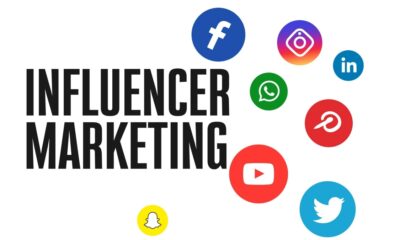Business
Advertising Essentials: 6 Things to Know About Ad Campaigns

Advertising is an essential part of marketing strategies for companies of all sizes because it helps them reach their intended demographic, advertise their goods and services, and increase sales. Careful preparation, inventiveness, and execution are necessary for successful advertising efforts to produce the intended outcomes. This post will cover six key topics of advertising campaigns, including goal-setting and success evaluation.
1. Define Clear Objectives
Establishing specific targets that complement your overarching marketing objectives is crucial before kicking off an advertising campaign. Establish your campaign’s goals, whether they be to raise sales, generate leads, increase website traffic, or raise brand awareness. SMART goals—specific, measurable, realistic, relevant, and time-bound—will help you plan your campaign and assess its effectiveness. Establishing clear objectives also guarantees that all campaign participants know what the goal is and can coordinate their efforts accordingly.
2. Know Your Target Audience
Advertising that resonates and encourages interaction requires a thorough understanding of your target demographic. Do market research to learn about the traits, interests, routines, and preferences of your target customers. Make use of this information to develop placement, message, and image strategies that are targeted at your target audience. Consider factors like age, gender, location, income level, way of life, and purchasing habits while developing your advertising plan. You may boost the likelihood that your ads will catch the attention of and compel action of your target audience by properly addressing their goals, desires, and pain areas. You may accomplish this by coming to know your target demographic thoroughly.
3. Choose the Right Advertising Channels
For your campaign to have the most possible impact and to effectively reach your target demographic, choosing the appropriate advertising channels is essential. Choose channels based on the interests and habits of your audience, considering where they spend their time, both online and offline. Social media sites, search engines, the internet, print media, radio, television, outdoor signage, and direct mail are examples of common advertising outlets. Assess each channel’s efficacy, cost, and reach to find the optimal combination for your campaign’s goals and spending plan. Your advertising will be viewed by the appropriate people at the right time if you choose the correct channels, which will increase their ROI and efficacy.
4. Craft Compelling Messaging and Creative
An advertising campaign’s ability to succeed is frequently determined by the caliber of its creativity and messaging. Create attention-grabbing headlines, taglines, and calls to action that clearly convey your value proposition and inspire action. To emotionally engage and motivate your audience, use rhetorical and narrative strategies. Invest in superior visuals that successfully communicate your message and capture the spirit of your business, such as photos, films, or graphics. To find the messaging and creative versions that your target audience responds to the most, test them out. You can draw in and convince your audience to act by concentrating on developing powerful messaging and creativity.
5. Set a Realistic Budget
Since budgeting establishes the extent and magnitude of your advertising endeavors, it is a crucial component of campaign planning. Based on your goals, the demographic you’re targeting, and the advertising channels you’ve selected, decide how much you’d like to spend on the campaign. When establishing your budget, consider elements like ad placement, amount of time, and production expenses. Throughout the campaign, keep an eye on and record your expenditures to make sure you remain under your budget and maximize results. You can maximize your advertising budget and obtain better results by establishing a reasonable spending limit and keeping a careful eye on your expenditures.
6. Eliminate Scams and Frauds
Scams and fraudulent acts in the advertising industry can put consumers and businesses in danger. Putting safeguards in place to protect your advertising efforts from ad fraud and different kinds of dangers is important. One approach to do this is by carefully screening any partners or advertising networks you decide to collaborate with. Make sure they have a history of moral behavior and openness by looking into their reputation, performance history, and reviews. Furthermore, be on the lookout for any suspect behavior, such as click fraud or bot traffic, indicated by elevated rates of click-through or engagement metrics.
Conclusion
For businesses to connect with those they want to reach, boost engagement, and achieve marketing objectives, advertising campaigns are essential. You can develop successful advertising campaigns that yield observable results by establishing precise goals, understanding your target market, selecting the best advertising channels, developing captivating creative and messages, allocating a reasonable budget, and tracking your progress. To stay ahead in today’s cutthroat industry, be up to date, be inventive, and keep improving your advertising strategy.
-

 Business3 weeks ago
Business3 weeks agoPrakash and Kamal Hinduja: Driving Social and Environmental Change
-
Education4 weeks ago
Fred DuVal: University Leadership as a Critical Resource for Climate Change Research and Life-Saving Solutions
-

 Cryptocurrency3 weeks ago
Cryptocurrency3 weeks agoDesigned For The Masses: How Akasha (AK1111) Is Unlocking Crypto For The Next Billion Users
-

 Health3 weeks ago
Health3 weeks agoThe Hinduja Brothers Commitment to Global Health: Empowering Communities Across Borders
-

 Cryptocurrency4 weeks ago
Cryptocurrency4 weeks agoNexaglobal & Future World Token (FWT): Could This Be the Next Big Crypto Investment of 2025?
-

 Startup2 weeks ago
Startup2 weeks agoCost-Saving Strategies Every Small Business Owner Should Know to Boost Efficiency
-

 Startup3 weeks ago
Startup3 weeks agoMatthew Denegre on the Art of Deal Sourcing: Finding the Right Investment Opportunities
-

 Health2 weeks ago
Health2 weeks agoSt. John’s Community Health Examines Innovations in Pharmacy Access























